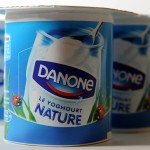Yesterday’s trade saw EUR/USD within the range of 1.0867-1.0969. The pair closed at 1.0935, going up 0.39% on a daily basis. It has been the 9th gain in the past 19 trading days and also a fourth consecutive one. The daily high has been the highest level since January 20th, when a high of 1.0977 was registered.
At 7:19 GMT today EUR/USD was losing 0.42% for the day to trade at 1.0890. The pair touched a daily high at 1.0948 at 4:25 GMT, overshooting the daily R1 level, and a daily low at 1.0883 during mid-Asian trading session.
On Friday EUR/USD trading may be influenced by the following macroeconomic reports as listed below.
Fundamentals
Euro area
Private sector lending
Lending to individuals and business entities in the Euro areas private sector probably expanded for an eighth consecutive month in December, rising at an annualized rate of 1.5%, according to market expectations. If so, this would be the fastest annual rate of increase in more than three years. In November the total value of private sector loans increased 1.4% year-on-year. In case lending expanded at a faster pace than anticipated, this would have a moderate bullish effect on the euro, as it implies higher economic activity in the future in terms of consumer spending and business investments. The European Central Bank (ECB) is expected to release the official data at 9:00 GMT.
Consumer price inflation – preliminary estimate
The preliminary annualized consumer inflation in the Euro zone, evaluated in accordance with Eurostat’s harmonized methodology, probably accelerated to 0.4% in January, according to the median estimate by experts, from a final rate of 0.2% in December. If so, this would be the highest annual inflation since October 2014, when a final rate of 0.4% was reported.
The largest upward pressures to impact the regions annual inflation in October were recorded for categories such as restaurants & cafés (up 0.10 percentage points), tobacco and vegetables (up 0.06 percentage points each).
At the same time, the largest downward pressure came from categories such as fuels for transport (-0.40 percentage points), heating oil (-0.19 percentage points) and gas (-0.10 percentage points), according to the report by Eurostat.
In case the HICP performance met expectations or went further into positive territory, thus, approaching the 2% inflation objective set by the ECB, this would cause a strong bullish impact on the euro, as it would suggest monetary policy accommodation has begun to work in favor of macroeconomic activity in the region.
The preliminary annualized Core HICP probably increased at a rate of 0.9% in January, matching the final rate, reported in November and December. This index excludes volatile categories such as food, energy, alcohol and tobacco. Eurostat is scheduled to release the preliminary inflation report at 10:00 GMT.
United States
Gross Domestic Product – preliminary estimate
The preliminary estimate of the US Gross Domestic Product probably pointed to an annualized rate of growth of 0.8% in the fourth quarter of the year, according to market expectations. The final GDP estimate for Q3, reported on December 22nd, pointed to an annual growth of 2.0%, a revision down compared to the second GDP estimate.
Consumer spending in the country rose 3.0% year-on-year in the third quarter of 2015, unchanged compared to the second estimate, and following a 3.6% expansion in the previous quarter.
Fixed investment rose at a final 3.7% year-on-year in Q3, down from a 3.4% expansion in the second estimate, as non-residential investment grew 2.6% and residential investment rose 8.2%. Fixed investment was 5.2% higher in Q2 2015 compared to the same period a year ago.
Government spending and investment registered a 1.8% expansion in Q3, according to final data, up from a 1.7% increase in the second estimate, but slowing down from a 2.6% growth in Q2.
US exports rose at an annualized rate of 0.7% in Q3, slowing down from a 0.9% growth in the second estimate, following a 5.2% growth in Q2. At the same time, US imports climbed 2.3% year-on-year in the third quarter, accelerating from a 2.1% increase in the second estimate, but down from a 3.0% gain in the second quarter, according to data by the US Department of Commerce.
In case US economic growth slowed down more than anticipated in Q4, this would have a strong bearish effect on the US dollar. The preliminary report is due out at 13:30 GMT.
Chicago Manufacturing Survey
The Chicago Purchasing Managers Index (PMI) probably improved to a reading of 45.0 in January, according to market expectations, from 42.9 during the prior month. The latter has been the lowest reading since June 2009, when the PMI came in at 39.9. The index reflects business conditions in the regions manufacturing sector and is interrelated with the Manufacturing Index, published by the Institute for Supply Management (ISM). A reading below the key level of 50.0 is indicative of pessimism (contraction in manufacturing activity). In case the PMI improved more than forecast, this would have a moderate bullish effect on the US dollar. The ISM-Chicago Inc. will release the official reading of this key barometer at 14:45 GMT.
Reuters/Michigan Consumer Sentiment Index – final reading
The monthly survey by Thomson Reuters and the University of Michigan may show that consumer confidence in the United States improved in January. The final reading of the corresponding index, which usually comes out two weeks after the preliminary data, probably came in at 93.0, slightly down from a preliminary value of 93.3. If market expectations were met, this would be the highest level since July 2015, when the gauge of sentiment was reported at a final 93.1. In December the gauge of confidence came in at a final reading of 92.6, improving from a preliminary value of 91.8. The survey encompasses about 500 respondents throughout the country. The index is comprised by two major components, a gauge of current conditions and a gauge of expectations. The current conditions index is based on the answers to two standard questions, while the index of expectations is based on three standard questions. All five questions have an equal weight in determining the value of the overall index.
According to preliminary data, the sub-index of current economic conditions, which measures US consumers’ views of their personal finances, went down to 105.1 in January from a final reading of 108.1 in December. The sub-index of consumer expectations improved to a flash reading of 85.7 in January from a final value of 82.7 in December.
Respondents in the survey expect that the rate of inflation in the next year will probably slow down to 2.4% from 2.6%, as expected in the December survey.
In case the final value of the consumer sentiment index confirmed or even came above the preliminary reading, this would have a moderate bullish effect on the dollar. The final reading is due out at 15:00 GMT.
Daily and Weekly Pivot Levels
By employing the Camarilla calculation method, the daily pivot levels for EUR/USD are presented as follows:
R1 – 1.0944
R2 – 1.0954
R3 (range resistance) – 1.0963
R4 (range breakout) – 1.0991
S1 – 1.0926
S2 – 1.0916
S3 (range support) – 1.0906
S4 (range breakout) – 1.0879
By using the traditional method of calculation, the weekly pivot levels for EUR/USD are presented as follows:
Central Pivot Point – 1.0851
R1 – 1.0924
R2 – 1.1052
R3 – 1.1125
S1 – 1.0723
S2 – 1.0650
S3 – 1.0522





